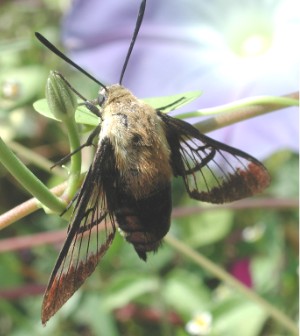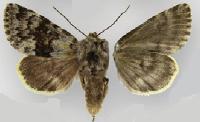
The orthopteran family Rhaphidophoridae of the suborder Ensifera has a worldwide distribution. Common names for these insects include cave crickets, camel crickets, spider crickets, and sand treaders. Those occurring in New Zealand are typically referred to as jumping or cave wētā. Most are found in forest environments or within caves, animal burrows, cellars, under stones, or in wood or similar environments. All species are flightless and nocturnal, usually with long antennae and legs. More than 500 species of Rhaphidophoridae are described.

Ivor Armstrong Richards CH, known as I. A. Richards, was an English educator, literary critic, poet, and rhetorician. His work contributed to the foundations of New Criticism, a formalist movement in literary theory which emphasized the close reading of a literary text, especially poetry, in an effort to discover how a work of literature functions as a self-contained and self-referential æsthetic object.

The family Gryllidae contains the subfamilies and genera which entomologists now term true crickets. Having long, whip-like antennae, they belong to the Orthopteran suborder Ensifera, which has been greatly reduced in the last 100 years : taxa such as the spider-crickets and allies, sword-tail crickets, wood or ground crickets and scaly crickets have been elevated to family level. The type genus is Gryllus and the first use of the family name "Gryllidae" was by Francis Walker.

Hemaris is a genus of sphinx moths in the subfamily Macroglossinae, which is native to the Holarctic. Their main host plants are herbs and shrubs of the teasel and honeysuckle families. Moths in genus Hemaris are known collectively as clearwing moths or hummingbird moths in the US and Canada and bee hawk-moths in Britain. The related Old World hummingbird hawk-moths, genus Macroglossum, are similar in appearance and habits. Both genera have tails that are provided with an expansile truncated tuft of hairs, but only Hemaris has the disc of the wings transparent, as these scales are dropped soon after eclosion.

Copromorphidae, the "tropical fruitworm moths", is a family of insects in the lepidopteran order. These moths have broad, rounded forewings, and well-camouflaged scale patterns. Unlike Carposinidae the mouthparts include "labial palps" with the second rather than third segment the longest. With other unusual structural characteristics of the caterpillar and adult, it could represent the sister lineage of all other extant members of this superfamily. The genus Sisyroxena from Madagascar is also notable for its unusual venation and wing scale sockets.

Brachodidae is a family of day-flying moths, commonly known as little bear moths, which contains about 135 species distributed around much of the world. The relationships and status of the presently included genera are not well understood.
Guy Coburn Robson (1888–1945) was a British zoologist, specializing in Mollusca, who first named and described Mesonychoteuthis hamiltoni, the colossal squid.

The Calpinae are a subfamily of moths in the family Erebidae described by Jean Baptiste Boisduval in 1840. This subfamily includes many species of moths that have a pointed and barbed proboscis adapted to piercing the skins of fruit to feed on juice, and in the case of the several Calyptra species of vampire moths, to piercing the skins of mammals to feed on blood. The subfamily contains some large moths with wingspans longer than 5 cm (2 in).

Urodidae, whose species are commonly known as false burnet moths, is a family of moths in the lepidopteran order. It is the type genus in the superfamily, Urodoidea, with three genera, one of which, Wockia, occurs in Europe.

Addison Whittaker Richards, Jr. was an American actor of film and television. Richards appeared in more than 300 films between 1933 and his death in 1964.

Bulia is a genus of moths in the family Erebidae.
Forsebia is a genus of moths in the family Erebidae. The genus was described by Richards in 1936.

Lasionycta is a genus of moths of the family Noctuidae.

Metalectra is a genus of moths of the family Erebidae described by Jacob Hübner in 1823.
Bulia similaris is a species of moth of the family Erebidae. It is found from southern California south to Baja California, east to southern Arizona, northwestern Sonora, western Texas and eastern Mexico.

The Erebidae are a family of moths in the superfamily Noctuoidea. The family is among the largest families of moths by species count and contains a wide variety of well-known macromoth groups. The family includes the underwings (Catocala); litter moths (Herminiinae); tiger, lichen, and wasp moths (Arctiinae); tussock moths (Lymantriinae), including the arctic woolly bear moth ; fruit-piercing moths ; micronoctuoid moths (Micronoctuini); snout moths (Hypeninae); and zales, though many of these common names can also refer to moths outside the Erebidae. Some of the erebid moths are called owlets.

The Melipotini are a tribe of moths in the family Erebidae.
Boryzops torresi is a species of moth of the family Erebidae. It is found in Loja Province, Ecuador.

Forsebia cinis, the forsebia moth, is a moth of the family Erebidae. It is found in North America, where it has been recorded from southern California and southern Nevada to western Texas and Oklahoma.












